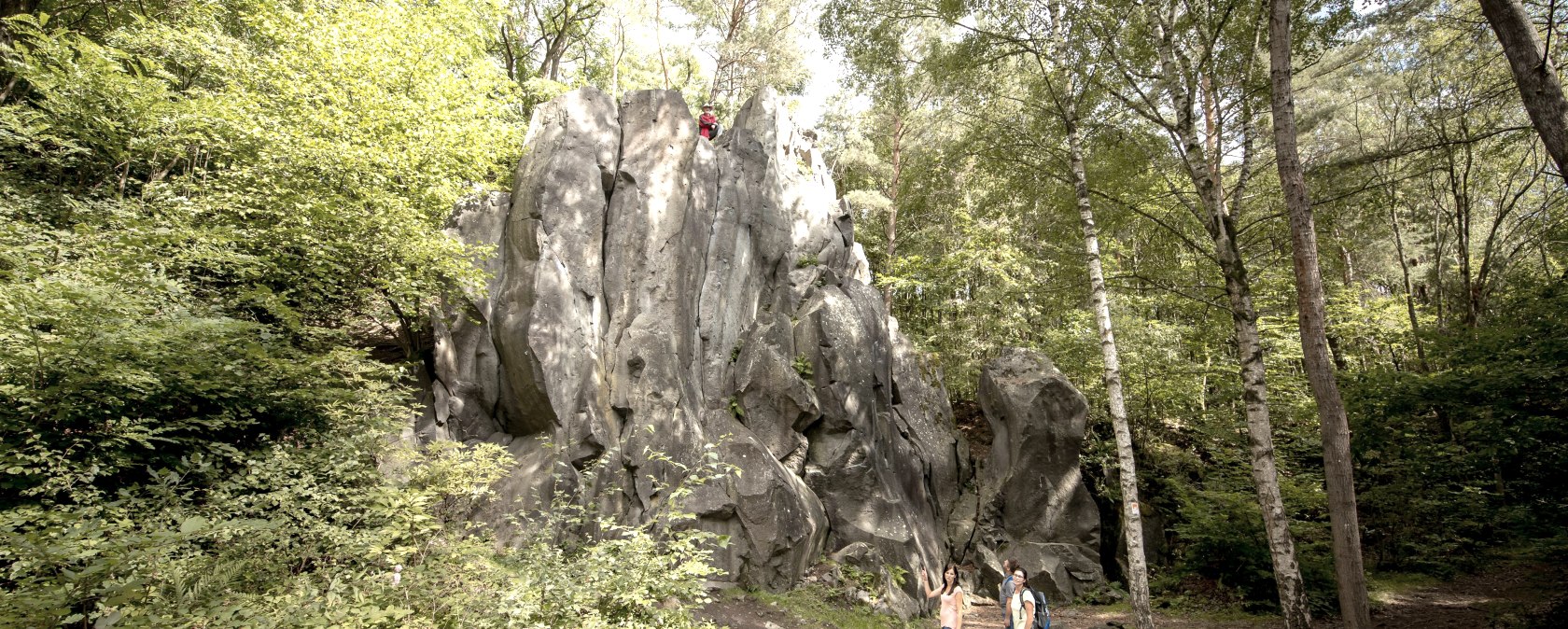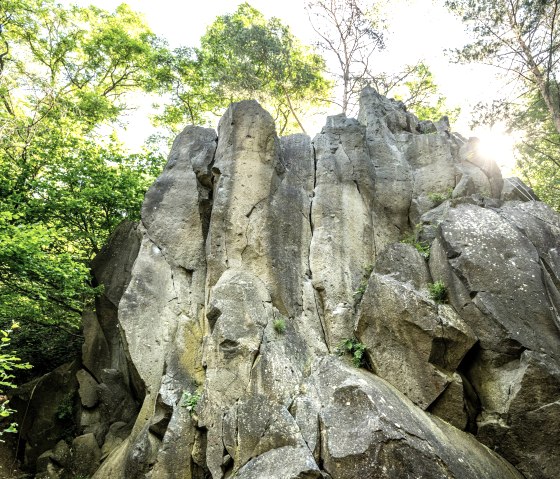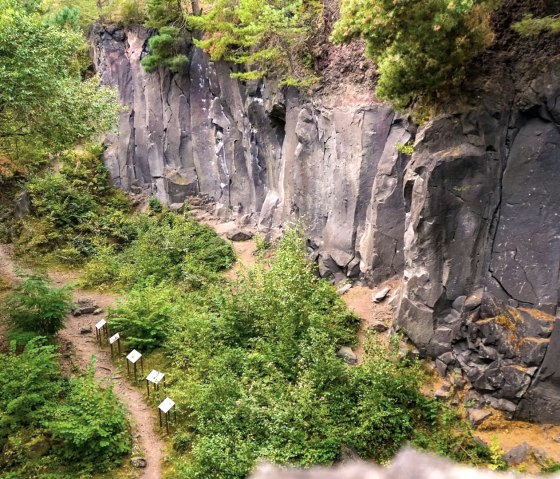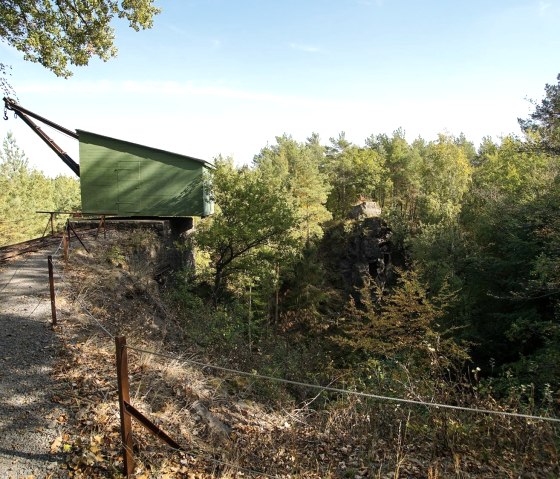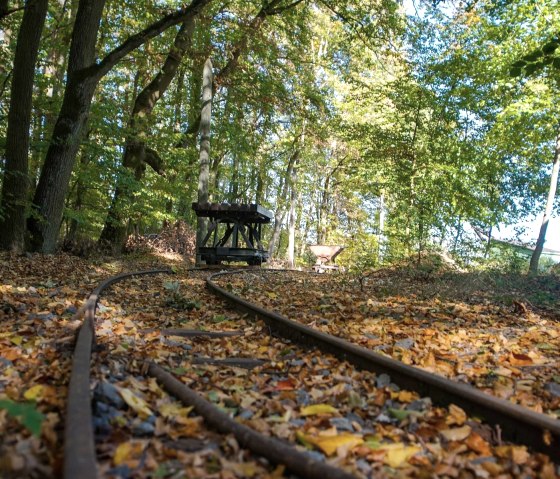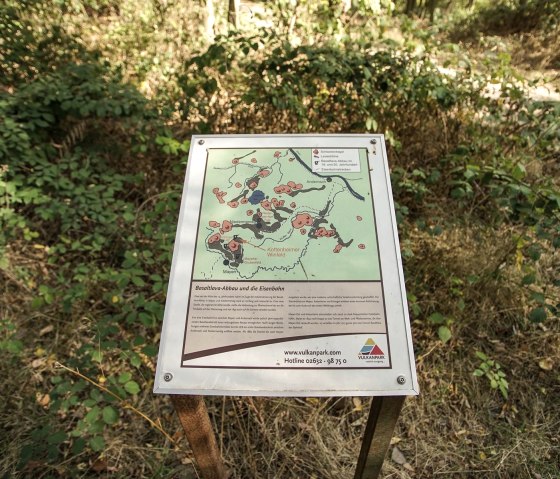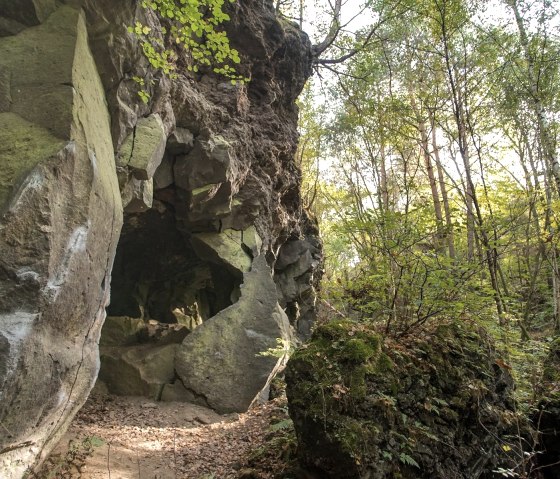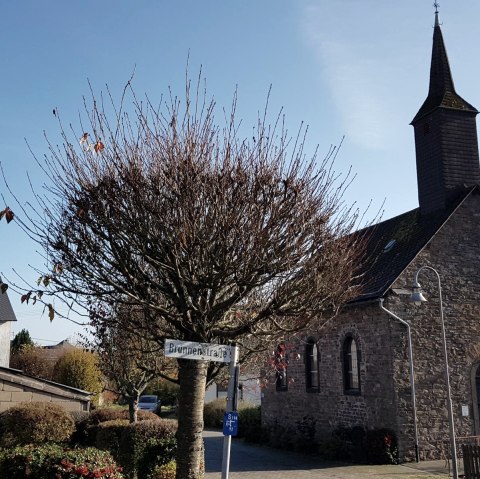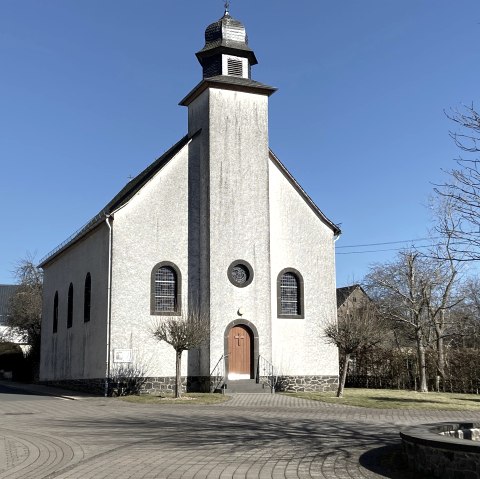Kottenheimer Winfeld - Vulkanparkstation
Kottenheim
The "Kottenheimer Winfeld" is a former quarry area in the area of the municipality of Kottenheim and owes its origin to the eruption of the Bellerberg volcano about 200,000 years ago. During the eruption, three lava flows flowed from the crater area. The stream north of the crater filled an old valley and reached a high of about 40 meters. Especially during the last 150 years, high walls of basalt rock were exposed in the area of the "Kottenheimer Winfeld" due to intensive stone mining.
Today, the idyllic pit landscape with its bizarre rock formations and relics from bygone times, such as crane bases and pit cranes, is part of the volcano park as a landscape monument.
The "Traumpfad Vulkanpfad" offers as a walkinground insight to the volcanic history of our region and connects several stations of the Vulkanpark in an impressive way.
Today, the imposing lava walls also serve as a climbing area.


